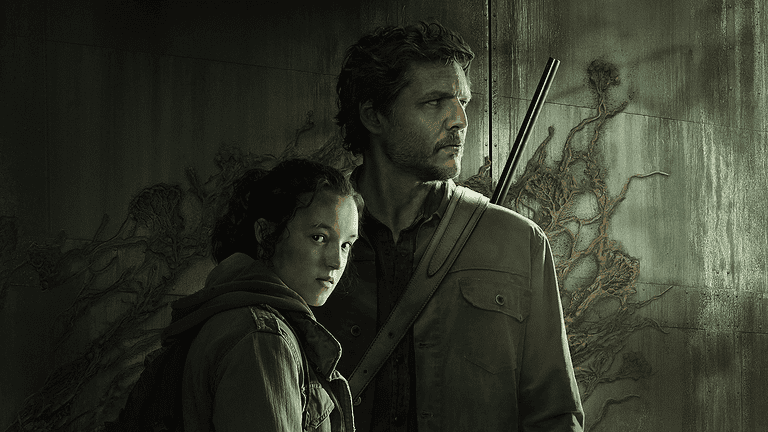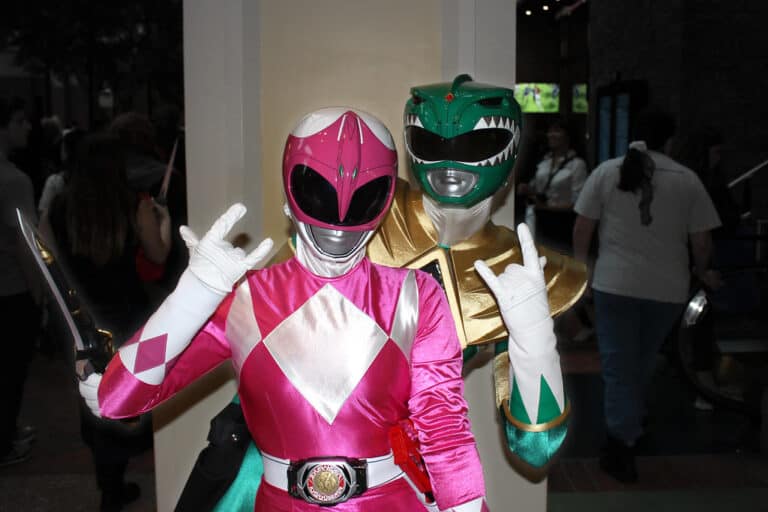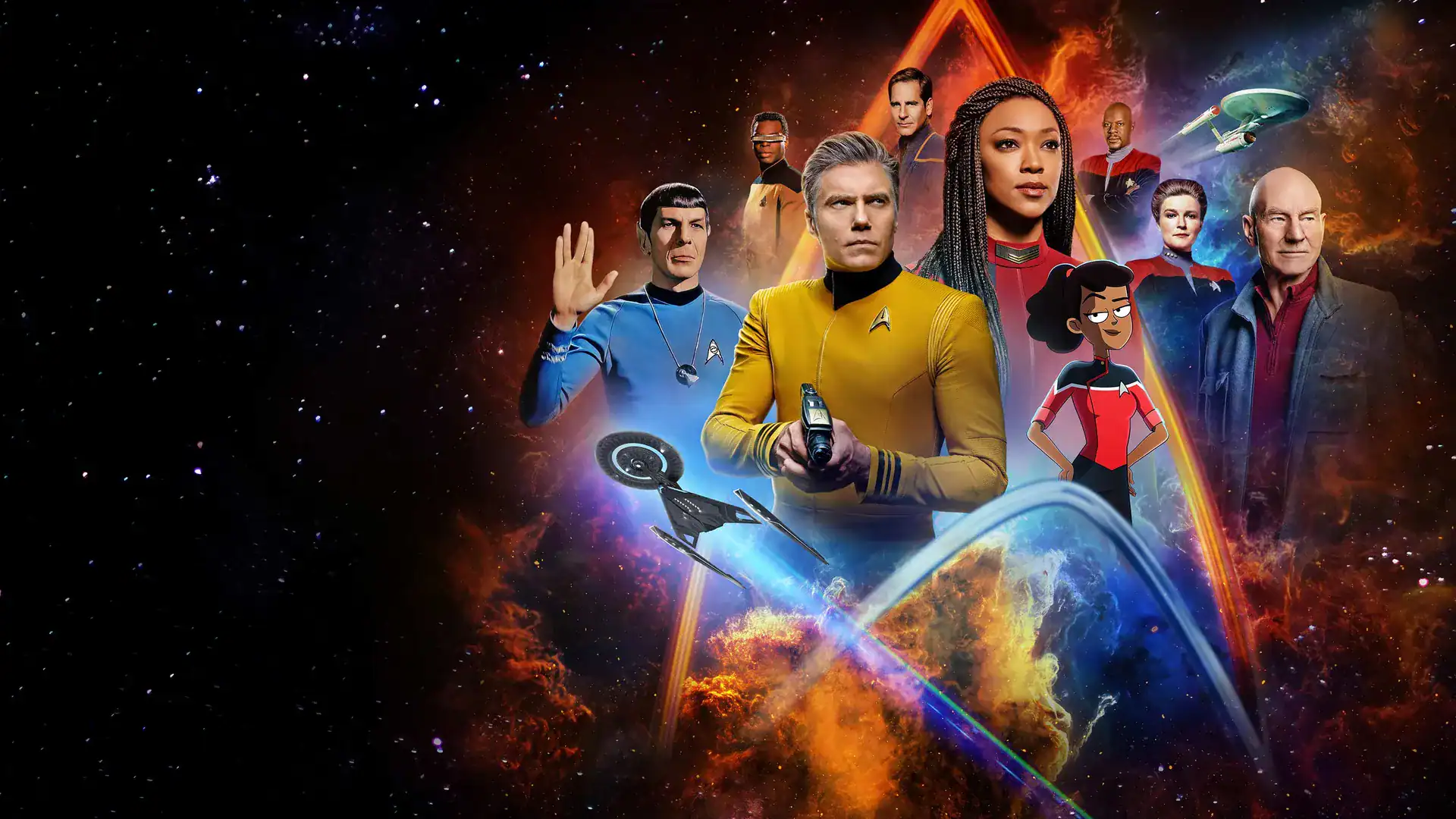
The Star Trek franchise continues to evolve in 2025, delivering fresh stories, bold character arcs, and new frontiers in both live-action and animated formats. With a mix of returning fan favorites and daring new experiments, the current slate reflects the franchise’s 21st-century renaissance. Here’s a full breakdown of every current and upcoming Star Trek project, plus a look at where the universe is boldly going next.
📺 Upcoming and Current Series
Star Trek: Strange New Worlds – Season 3
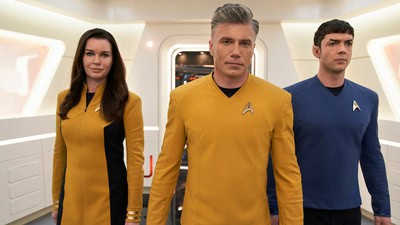
Premieres July 17, 2025 (Paramount+)
The third season returns with a two-episode debut, followed by weekly releases through September 11. Picking up from the dramatic cliffhanger of Season 2, the crew of the Enterprise faces high-stakes dilemmas across diverse worlds. Season 3 promises genre-hopping once again—with confirmed appearances by guest stars like Rhys Darby and Patton Oswalt, and teases of a holodeck episode, despite holodecks not existing in this timeline. This creative liberty is already fueling fan theories about alternate realities or alien technology that mimics the holodeck concept.
Strange New Worlds remains a critical darling for blending the classic episodic Trek format with modern pacing and character development. It’s also spearheading the franchise’s ability to merge nostalgia with innovation.
Star Trek: Strange New Worlds – Season 4
Currently in Production
Already filming in Toronto, Season 4 is on track for a 2026 release. Showrunners have confirmed the show will continue its anthology-style structure, experimenting with different tones—ranging from horror and comedy to moral parables—each week. After Season 2’s animated crossover with Lower Decks and a musical episode, expectations are high for further creative swings.
Star Trek: Starfleet Academy
Expected Late 2025 or 2026
Set in the 32nd century—the farthest point in the Trek timeline—Starfleet Academy follows a fresh class of cadets navigating moral challenges, interstellar politics, and the legacy of the Federation after its near-collapse in Discovery. Holly Hunter stars as the Academy’s chancellor, with Paul Giamatti playing the antagonist and Tig Notaro reprising her Discovery role as engineer Jett Reno.
The show aims to reach a younger demographic while still tying into broader franchise themes, especially resilience, unity, and identity in a fractured galaxy. With filming wrapped as of February 2025, a teaser trailer is expected this fall.
Star Trek: Khan (Audio Drama)
Releases Later in 2025
This nine-part podcast series dives deep into the exile of Khan Noonien Singh on Ceti Alpha V—between the events of The Original Series episode “Space Seed” and the film The Wrath of Khan. Actor Naveen Andrews (known for Lost) lends his voice to the titular role.
The drama is produced by Nicholas Meyer, the legendary director of The Wrath of Khan, which gives it extra credibility among Trek purists. Expect a cerebral, Shakespearean tone exploring revenge, isolation, and genetic ambition.
🎬 Recent Releases
Star Trek: Section 31
Released January 24, 2025 (Paramount+)
This long-awaited movie event stars Michelle Yeoh reprising her role as Emperor Philippa Georgiou. The film follows her recruitment into Section 31—a secretive black-ops wing of Starfleet—and her attempt to find redemption through morally murky missions.
Set in the Mirror Universe and Prime Universe, the movie dives into philosophical grey zones while featuring slick choreography and bold visual design. Though critical reception was mixed, it attracted strong viewership and could spark future spin-offs in the espionage side of Star Trek lore.
📉 Series Conclusions and Transitions
Star Trek: Lower Decks
Series Concluded (Final Season: Oct–Dec 2024)
The animated comedy wrapped after five acclaimed seasons, ending on a note that paid homage to the broader Star Trek canon while giving emotional closure to characters like Mariner, Boimler, and Tendi. While the show’s humor won over a younger audience, its Easter eggs and deeper commentary about lower-ranking Starfleet officers earned praise from die-hard fans.
Rumors persist of a follow-up special or even a crossover appearance in Strange New Worlds or Starfleet Academy.
Star Trek: Prodigy
Netflix Departure Imminent
Although once canceled by Paramount+, Prodigy found a second life on Netflix. Season 1 leaves the platform on June 24, 2025, and Season 2 will be removed on December 31, 2025, due to licensing expiration.
The show, aimed at younger viewers but rich in continuity nods, has developed a passionate following. Showrunners are actively seeking a new home for the series, and with its solid streaming performance, a revival isn’t out of the question.
🌟 Character Highlight: Seven of Nine
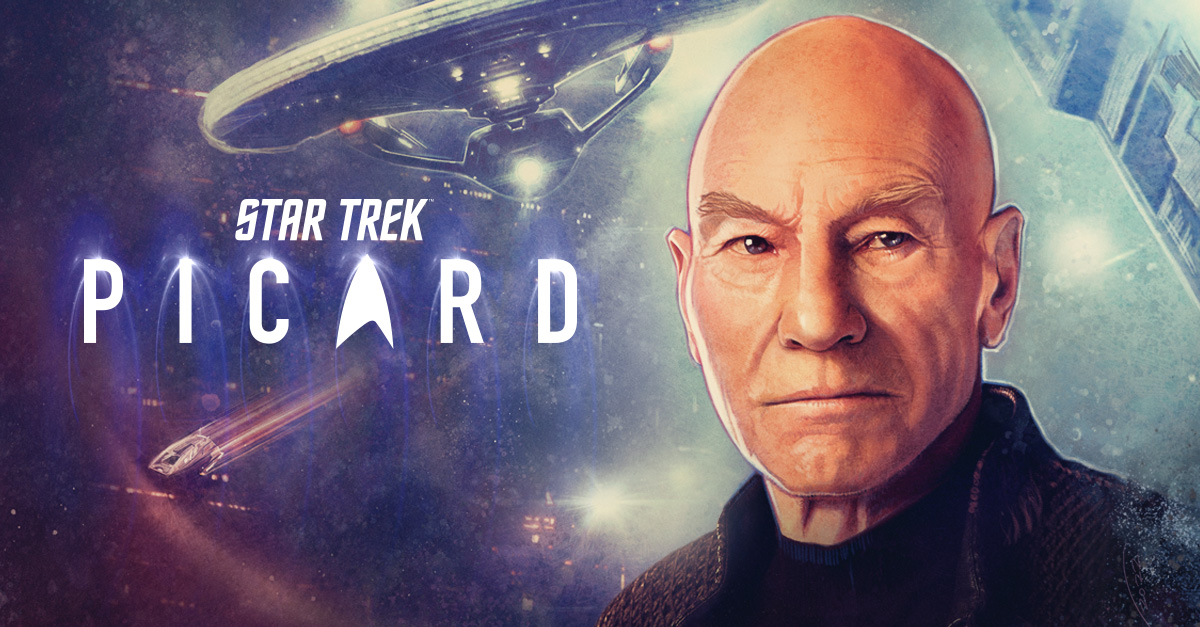
In Star Trek: Picard Season 3, fan-favorite Seven of Nine (Jeri Ryan) is finally granted her own captaincy. Yet in a cheeky twist, the show never reveals her “warp command”—the traditional catchphrase a captain says before a ship jumps to warp (e.g., “Engage,” “Make it so”).
Jeri Ryan recently shared that she loves the idea of leaving that moment a mystery, allowing fans to imagine what she might say. It’s a fitting end to her character arc—one of self-definition, reclamation, and rebellion against expectation.
From bold experiments in audio storytelling to deep dives into fan-favorite characters and institutions, Star Trek in 2025 proves the franchise isn’t just surviving—it’s boldly thriving. With Paramount+ fully committed to expanding the Trek universe, fans have plenty of reason to stay strapped in for the journey ahead.
Star Trek Movies and TV Shows In Order
Star Trek has captured the imaginations of sci-fi fans for decades with its expansive universe of TV shows and movies. Since the original series debuted in 1966, the franchise has grown to include over 10 TV series and 13 films that explore space exploration, cultural diversity, and humanity’s potential future. The entire Star Trek franchise is currently available to stream on Paramount+, giving you complete access to every TV show and movie in the iconic sci-fi saga.
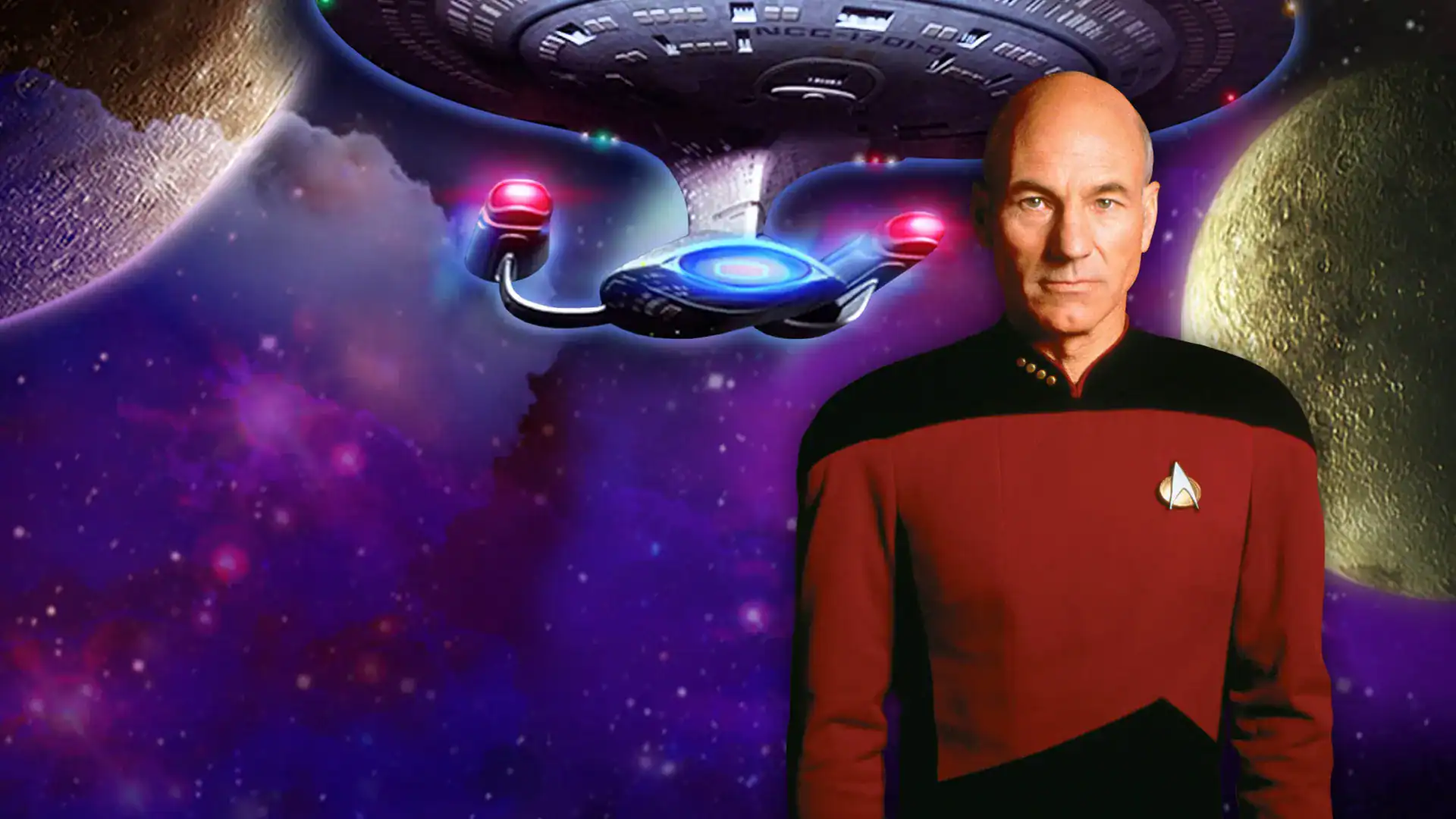
The Star Trek timeline spans multiple centuries and follows different crews across various starships and space stations. If you’re new to the franchise, you might wonder where to begin your journey through the final frontier. From the 1960s original series starring William Shatner as Captain Kirk to newer shows like “Strange New Worlds,” the franchise offers different entry points depending on your interests.
Star Trek’s film series began with “Star Trek: The Motion Picture” in 1979 and continued with classics like “The Wrath of Khan” and “The Voyage Home.” The movies showcase bigger adventures with higher stakes than their TV counterparts, while maintaining the thoughtful themes and character development that make Star Trek films so beloved.
The Star Trek franchise has a complex timeline with shows and movies released over many decades, sometimes jumping back and forth in the in-universe chronology. There are two main ways to watch: by release order (how they came out) or by chronological order (the in-universe timeline). Most fans recommend release order for a first-time watch to appreciate the evolving storytelling and special effects, but here’s a chronological order of the Prime Timeline (excluding the Kelvin timeline movies Star Trek, Into Darkness, and Beyond, which are a separate continuity):
Chronological Order (In-Universe Timeline):
- Star Trek: Enterprise (TV series, 2151-2161) – This is a prequel series, showing the very early days of Starfleet.
- Star Trek: Discovery (TV series, Seasons 1-2, 2255-2258) – These seasons are set a decade before the original series.
- Star Trek: Strange New Worlds (TV series, 2259-present) – Follows Captain Pike and the Enterprise crew before Kirk.
- Star Trek: The Original Series (TOS) (TV series, 2265-2269) – The iconic series with Captain Kirk, Spock, and McCoy.
- Star Trek: The Animated Series (TAS) (TV series, 2269-2270) – Continues the adventures of the TOS crew.
- Star Trek: The Motion Picture (Movie, 2273)
- Star Trek II: The Wrath of Khan (Movie, 2285)
- Star Trek III: The Search for Spock (Movie, 2285)
- Star Trek IV: The Voyage Home (Movie, 2286)
- Star Trek V: The Final Frontier (Movie, 2287)
- Star Trek VI: The Undiscovered Country (Movie, 2293)
- Star Trek: Generations (Movie, 2293 for the TOS crew segment, then 2371 for TNG crew) – This movie bridges the gap between the TOS movies and the TNG era.
- Star Trek: The Next Generation (TNG) (TV series, 2364-2370) – Follows Captain Picard and the crew of the Enterprise-D.
- Star Trek: Deep Space Nine (DS9) (TV series, 2369-2375) – Runs concurrently with much of TNG and Voyager.
- Star Trek: Voyager (TV series, 2371-2378) – Also runs concurrently with DS9.
- Star Trek: First Contact (Movie, 2373)
- Star Trek: Insurrection (Movie, 2375)
- Star Trek: Nemesis (Movie, 2379)
- Star Trek: Lower Decks (Animated TV series, 2380) – A comedic take set shortly after Nemesis.
- Star Trek: Prodigy (Animated TV series, 2383) – Aimed at a younger audience.
- Star Trek: Picard (TV series, 2399-2401) – Follows Jean-Luc Picard later in his life.
- Star Trek: Discovery (TV series, Seasons 3-5, 3188-3191) – After Season 2, Discovery jumps far into the future.
- Star Trek: Section 31 (Movie, expected 2025) – Reportedly set after Nemesis and before Picard.
The “Kelvin Timeline” Movies (Alternate Reality):
These three movies are a separate continuity, often referred to as the “Kelvin Timeline,” and can be watched independently:
- Star Trek (2009)
- Star Trek Into Darkness (2013)
- Star Trek Beyond (2016)
Key Takeaways
- Star Trek spans over 50 years of content with numerous TV shows and movies that you can now stream entirely on one platform.
- The franchise follows a complex timeline across different centuries, ships, and crews, offering multiple entry points for new viewers.
- New Star Trek content continues to be developed, including upcoming projects like “Section 31” and “Starfleet Academy” that expand the universe further.
Evolution of the Star Trek Franchise
Star Trek began as a single television show but grew into one of entertainment’s most enduring franchises, spanning decades of cultural shifts and technological changes. The series evolved from its humble beginnings to become a multimedia empire.
The Beginning: The Original Series
Star Trek debuted in 1966 on NBC with “The Original Series” (TOS), created by Gene Roddenberry. The series introduced viewers to Captain James T. Kirk, the logical Mr. Spock, and the iconic USS Enterprise. Despite lasting only three seasons, TOS established the foundation for everything that followed.
The show was revolutionary for its time, featuring a diverse crew and tackling complex social issues through science fiction storytelling. Lieutenant Uhura, Sulu, and Chekov represented unprecedented diversity on television.
After cancellation in 1969, the series gained popularity through syndication. Fans (calling themselves “Trekkies”) organized conventions and wrote letters demanding the return of their beloved show. This passionate fan base would prove crucial to the franchise’s survival and eventual expansion.
The Expansion: Movies and Sequel Series
Following a decade-long hiatus, Star Trek returned with “Star Trek: The Motion Picture” in 1979. While critically divisive, it proved commercially successful enough to launch a film series. “Star Trek II: The Wrath of Khan” (1982) is widely considered the franchise’s best film, featuring an unforgettable villain and emotional storytelling.
The films continued with varying success through “Star Trek VI: The Undiscovered Country” (1991), which served as a farewell to the original crew. Meanwhile, television saw the launch of “Star Trek: The Next Generation” (TNG) in 1987, introducing Captain Jean-Luc Picard and a new Enterprise.
TNG’s success led to multiple spin-offs: “Deep Space Nine,” “Voyager,” and “Enterprise.” Each expanded the universe while exploring different aspects of the Federation. The franchise maintained its optimistic view of humanity’s future while addressing contemporary social issues.
Modern Interpretations: Reboots and Spin-offs
In 2009, director J.J. Abrams breathed new life into the franchise with a reboot film simply titled “Star Trek.” This created the “Kelvin Timeline,” an alternate universe featuring younger versions of Kirk and Spock. Two sequels followed, appealing to both new audiences and longtime fans.
Television experienced its own renaissance when Star Trek: Discovery launched on the streaming service CBS All Access (now Paramount+) in 2017. This marked a new era for the franchise, with multiple shows developing simultaneously.
Recent years have seen unprecedented expansion with “Star Trek: Picard,” bringing back Patrick Stewart’s beloved character, and animated series like “Lower Decks” and “Prodigy.” “Star Trek: Strange New Worlds” returned to the episodic format of earlier series while featuring characters from TOS.
Paramount+ has become the streaming home for all things Trek, making the franchise more accessible than ever. Today’s Star Trek continues to evolve while maintaining its core values of diversity, scientific exploration, and optimism about humanity’s future.
Star Trek Television Universe
The Star Trek television universe spans over five decades, growing from a single pioneering show into a diverse collection of series that explore humanity’s potential through science fiction. The franchise has continuously evolved while maintaining its core values of discovery, diversity, and hope for the future.
Exploring New Worlds: The Original and Animated Series
Star Trek: The Original Series debuted in 1966, introducing viewers to Captain Kirk, Mr. Spock, and the crew of the USS Enterprise. This groundbreaking show established the Federation’s ideals of peace, cooperation, and scientific exploration.
The series tackled social issues through science fiction storytelling. Episodes like “Let That Be Your Last Battlefield” addressed racism, while “A Private Little War” commented on the Vietnam War. Despite lasting only three seasons, its cultural impact was immense.
Star Trek: The Animated Series continued the Enterprise’s five-year mission from 1973-1974. Though often overlooked, it preserved the original cast through voice acting and expanded the universe with aliens too exotic for live-action budgets.
The animated format allowed for more creative freedom in depicting alien worlds and creatures. You can see this in episodes featuring non-humanoid crew members and more fantastical environments than were possible in the 1960s.
The Next Generation and its Successors
Star Trek: The Next Generation revitalized the franchise in 1987 with Captain Picard commanding a new Enterprise. This series refined Star Trek’s philosophy while introducing iconic villains like the Borg, a cybernetic collective that threatened assimilation of all life.
Deep Space Nine broke the mold by setting the story on a space station, allowing for complex political storylines and the franchise’s first major war story. The Dominion War arc showed how Federation ideals could be tested under extreme pressure.
Voyager stranded its crew in the Delta Quadrant, forcing Starfleet officers and Maquis rebels to work together for survival. Captain Janeway’s leadership during their 70,000 light-year journey home showcased Starfleet’s resilience and adaptability.
These shows expanded the Klingon culture with characters like Worf, deepened the political landscape of the Alpha Quadrant, and explored ethical dilemmas facing an advanced civilization.
Continuations and Prequels
Enterprise served as a prequel set before the Federation’s founding, showing humanity’s first steps into deep space. Captain Archer and his crew navigated a dangerous galaxy without the protocols later captains would rely on.
The show depicted the early relationships between humans and Vulcans, and introduced the Temporal Cold War concept. You get to see familiar technologies in their developmental stages, from rudimentary transporters to early phase cannons.
Discovery took another approach to prequels with high production values and a serialized format. Set initially before The Original Series, it later jumped far into the future, showing a Federation recovering from a catastrophic event.
Both shows faced the challenge of honoring established canon while creating compelling new stories. Enterprise explored the foundation of Starfleet principles, while Discovery examined them through both historical and far-future lenses.
The Newest Frontiers
Recent years have seen an explosion of new Star Trek series. Picard returned viewers to the Next Generation era, examining how the Federation evolved after the Dominion War and Romulan crisis.
Strange New Worlds recaptured the episodic format of earlier series, following Captain Pike’s Enterprise before Kirk’s command. The show balances modern production values with classic storytelling approaches.
Lower Decks offers an animated comedy focusing on junior officers aboard a minor Starfleet vessel. Despite its humorous approach, it remains faithful to Trek lore and celebrates the franchise’s history.
Prodigy targets younger viewers, following alien teens who discover an abandoned Starfleet vessel. The show introduces Star Trek concepts to a new generation while featuring familiar elements like a holographic Captain Janeway.
Star Trek Filmography
The Star Trek film franchise spans multiple decades with distinct storylines across three major eras. Each film series builds upon established characters while introducing new technology, conflicts, and explorations of space.
The Original Series Films
The cinematic journey began with Star Trek: The Motion Picture (1979), which reunited the original crew for a visually stunning but slower-paced adventure. This was quickly followed by the fan-favorite Star Trek II: The Wrath of Khan (1982), featuring Ricardo Montalban’s memorable villain Khan Noonien Singh.
The story continued with Star Trek III: The Search for Spock (1984) and Star Trek IV: The Voyage Home (1986), the latter featuring a delightful time travel plot to save whales in 1980s San Francisco.
Star Trek V: The Final Frontier (1989) took a spiritual direction as the crew searched for God at the center of the galaxy. The original cast’s final adventure came with Star Trek VI: The Undiscovered Country (1991), which served as a political allegory about the end of the Cold War through the Federation making peace with the Klingons.
The Next Generation Films
The Next Generation crew transitioned to the big screen with Star Trek Generations (1994), a passing-of-the-torch film that featured both Captain Kirk and Captain Picard. This crossover event marked the end of Kirk’s story and the beginning of the TNG film series.
Star Trek: First Contact (1996) stands as the most successful TNG film, bringing back the Borg in a time travel adventure to Earth’s past. The action-packed story explored humanity’s first contact with aliens and Picard’s personal vendetta against the Borg.
The series continued with Star Trek: Insurrection (1998), focusing on a moral dilemma regarding a planet with regenerative properties. The final TNG film, Star Trek: Nemesis (2002), introduced Tom Hardy as Shinzon, a clone of Picard, but disappointed at the box office, putting the franchise on hiatus for seven years.
The Reboot Trilogy: Kelvin Timeline
J.J. Abrams revitalized the franchise with Star Trek (2009), establishing an alternate timeline (dubbed the “Kelvin Timeline”) with new actors playing classic characters. Chris Pine took on the role of Kirk, with Zachary Quinto as Spock and Simon Pegg as Scotty.
The sequel, Star Trek Into Darkness (2013), controversially reimagined the Khan storyline with Benedict Cumberbatch. Though financially successful, some fans criticized it for recycling too many elements from The Wrath of Khan.
The trilogy concluded with Star Trek Beyond (2016), which embraced a more exploratory tone reminiscent of the original series. Directed by Justin Lin, the film celebrated the 50th anniversary of Star Trek with spectacular action sequences and a return to the franchise’s optimistic roots.
Cultural and Societal Impact
Star Trek has profoundly shaped our world beyond entertainment, offering thoughtful commentary on humanity while inspiring real technological advancements and becoming deeply embedded in global culture.
Philosophical and Ethical Narratives
Star Trek tackles complex ethical questions through its storytelling. The franchise uses alien races and futuristic scenarios as allegories for real-world issues. You can see this in episodes addressing racism, civil liberties, and the pursuit of peace during Cold War tensions.
The Federation’s prime directive—non-interference with developing civilizations—forces viewers to question the ethics of imposing values on others. This principle parallels real-world debates about cultural imperialism and intervention.
Gene Roddenberry’s vision portrayed a future where humanity had overcome its divisions. The diverse crew of the Enterprise demonstrated a society where cooperation trumped conflict, offering hope for our own potential evolution.
Episodes like “Let That Be Your Last Battlefield” with its half-black, half-white aliens directly confronted racial prejudice, while “The Measure of a Man” examined what defines personhood and rights.
Influence on Science and Technology
Many technologies first imagined in Star Trek have inspired real innovations. The communicator presaged modern cell phones, while PADDs (Personal Access Display Devices) foretold tablets and e-readers.
Scientists and engineers often cite the show as their inspiration. NASA’s first space shuttle was named Enterprise after fan campaigns, showing the direct link between the show and actual space travel advancement.
Medical technologies like non-invasive body scanning mirror today’s MRI machines. Even automatic doors, now commonplace, were once futuristic elements of the Enterprise.
Some Treknology remains aspirational: warp drive, transporters, and replicators still elude us, but researchers actively pursue similar concepts. Physicists study theoretical warp bubbles, while 3D printing edges toward replication technology.
Star Trek’s Role in Popular Culture
Star Trek terminology has infiltrated everyday language. Phrases like “beam me up,” “going where no one has gone before,” and “resistance is futile” appear regularly in conversations and media.
The show pioneered fan conventions and participatory fandom. Trekkies represent one of the most dedicated fan communities, creating fan fiction, elaborate costumes, and even developing the Klingon language into a fully functional linguistic system.
Popular culture references Star Trek constantly in shows like The Big Bang Theory, The Simpsons, and films like Galaxy Quest, which lovingly parodies Trek conventions and fans.
The franchise influenced later sci-fi shows and films through its optimistic view of humanity’s future. Unlike dystopian sci-fi, Star Trek’s hopeful vision suggests that you and all humanity can overcome current problems to build a better society.
Character and Storyline Analysis
Star Trek’s enduring legacy rests on its well-crafted characters and thought-provoking narratives that explore humanity’s potential through science fiction storytelling. The franchise expertly balances personal journeys with broader philosophical questions.
Iconic Characters and Relationships
The heart of Star Trek lies in its memorable characters and their complex relationships. Captain James T. Kirk, portrayed with charismatic confidence, represents humanity’s boldness and intuition. His friendship with the logical half-Vulcan Spock creates one of television’s most enduring dynamics—a relationship that explores the balance between emotion and reason.
In later series, you’ll find Jean-Luc Picard offering a different leadership model—thoughtful, diplomatic, and principled. The Enterprise-D captain demonstrates how intellectual strength can be as compelling as physical prowess.
More recent additions like Captain Pike in “Strange New Worlds” and Philippa Georgiou (played by Michelle Yeoh) in “Discovery” continue this tradition of complex leadership figures. Pike’s optimism and Georgiou’s duality (especially her Mirror Universe counterpart) show how the franchise continues to evolve its character explorations.
Character dynamics often reveal tensions between duty and personal values—a recurring theme throughout all Trek iterations.
Notable Antagonists and Allies
The Federation faces diverse adversaries that challenge its ideals. The Klingons evolved from simple Cold War Soviet analogues to a nuanced warrior culture with their own honor code. Their journey from enemies to allies represents one of Trek’s most significant story arcs.
The Borg stand as perhaps the most terrifying antagonists—a collective that strips away individuality and represents assimilation rather than cooperation. Their introduction fundamentally changed the Trek universe and created some of its most compelling conflict scenarios.
Section 31, the shadowy intelligence organization, raises uncomfortable questions about whether the Federation’s utopian ideals can survive without compromise.
Not all encounters are hostile, though. You’ll witness diplomatic breakthroughs and unexpected alliances across the franchise. These relationships often challenge preconceptions and demonstrate how understanding can overcome prejudice.
Space battles may provide visual excitement, but the most memorable conflicts in Trek emerge from ideological differences rather than weapons fire.
Exploring Themes of Exploration and Conflict
Star Trek consistently examines humanity’s drive to explore and the ethical dilemmas that arise along the way. The franchise poses difficult questions: What responsibilities do you have when encountering new civilizations? When is intervention justified?
The Prime Directive—non-interference with developing societies—creates moral tensions throughout the various series. You’ll see captains wrestle with following rules versus doing what seems right in the moment.
The Enterprise itself symbolizes humanity’s best qualities: curiosity, cooperation, and peaceful intent. Yet the ship regularly encounters situations where these ideals are tested against harsh realities.
Trek’s storytelling strength comes from balancing optimism with pragmatism. While maintaining hope for a better future, it acknowledges the complex challenges in achieving it.
The conflict between idealism and necessity drives many of the franchise’s most powerful stories, asking what compromises might be necessary—or unacceptable—in pursuing a more enlightened civilization.
Understanding the Star Trek Timeline
Star Trek’s timeline spans hundreds of years across multiple centuries, featuring complex narrative threads that weave through different eras. The franchise creates a rich tapestry of interconnected stories that can be approached in different ways.
Chronological and Release Order
You can watch Star Trek in two main ways: chronological or release order. Chronological order follows the in-universe timeline, starting with “Enterprise” (22nd century), then “Discovery” (23rd century), and moving forward through time.
Release order begins with The Original Series (TOS) from the 1960s, followed by the animated series, films, and subsequent shows. Many fans prefer this approach as it shows how the franchise evolved.
The timeline spans from the 2150s (Enterprise) through the 2250s-2260s (TOS), the 2360s-2370s (TNG, DS9, Voyager), and into the 32nd century with later Discovery seasons. Each era explores different challenges and developments in the Federation’s history.
Alternate Realities and Time Travel
Star Trek features numerous time travel episodes and alternate timelines that add complexity to the narrative universe. The most significant alternate reality is the Kelvin Timeline, created when Nero traveled back in time in the 2009 film.
This event split the timeline, creating the setting for the newer films starring Chris Pine as Kirk. The prime timeline continues in shows like “Picard” and “Strange New Worlds.”
Time travel appears frequently throughout the franchise, from TOS episodes like “City on the Edge of Forever” to major plot arcs in “Discovery” Season 3. These stories often explore how small changes in history could drastically alter the future of humanity and the Federation.
Spin-offs and Expanded Universe
The Star Trek universe extends beyond the main series with various spin-offs that enrich the complete timeline. “Short Treks” provides brief stories that complement the main shows, offering glimpses into character backstories and undeveloped plot points.
Animated series like “Lower Decks” and “Prodigy” add humor and younger perspectives to the franchise while maintaining continuity with the prime timeline. These shows often reference events from earlier series, rewarding longtime fans.
The upcoming “Star Trek: Section 31” will focus on the secretive intelligence organization first introduced in Deep Space Nine. Though not part of the main fictional timeline, novels, comics, and video games have also expanded the universe with stories set in various eras, exploring untold adventures of familiar characters.
Star Trek and its Fan Base
Star Trek boasts one of the most dedicated fan communities in entertainment history. The franchise has inspired generations through its vision of a better future, leading to incredible creative works, passionate debates, and meaningful personal transformations.
Fan Contributions and Creations
Star Trek fans have gone beyond simple appreciation to become creators in their own right. You’ll find impressive fan films like “Star Trek: Of Gods and Men,” “Axanar,” and “Digital Ghost” that demonstrate tremendous dedication to the universe.
Fan productions have become so significant that they’ve warranted their own Wikipedia page, showing their cultural importance. These works often fill gaps between official releases or explore storylines that mainstream productions haven’t addressed.
At conventions worldwide, you’ll encounter stunning costumes, replica props, and artwork created by talented fans. Many conventions feature competition categories specifically for Star Trek creations, from engineering challenges to costume contests.
Some fan creations have even influenced official Star Trek canon, with writers and producers acknowledging fan theories or addressing popular fan questions in new productions.
Debates and Discussions Among Fans
The Star Trek community thrives on friendly debates about everything from the best movies to philosophical questions posed by episodes. “Star Trek IV: The Voyage Home” was the 4th highest-grossing film of 1986, yet fans still debate whether it or “The Wrath of Khan” deserves top honors.
Common debate topics include:
- Best captain: Kirk vs. Picard vs. Janeway vs. Sisko
- Superior series: Original Series vs. Next Generation vs. Deep Space Nine
- Canon interpretation: What elements of books, games, and comics should be considered official?
Online forums and social media groups give you platforms to discuss favorite episodes, analyze character development, and speculate about upcoming releases. These discussions build community while deepening appreciation for the shows’ nuances.
The franchise’s 50+ year history with seven TV series and thirteen movies provides endless material for thoughtful analysis.
Impact of Star Trek on Fan’s Lives
Star Trek has profoundly influenced many fans’ career choices and personal values. You’ll find engineers, scientists, and astronauts who cite the show as their inspiration for pursuing technical fields.
The franchise’s optimistic vision of humanity’s future has helped fans through difficult times. Many report that Star Trek’s inclusive, diverse outlook shaped their worldview and ethical principles.
Some fans have found life partners through Star Trek conventions or online communities. These relationships started with a shared love of the franchise but grew into deeper connections.
The Star Trek universe has provided a framework for understanding complex social issues. When you watch episodes tackling racism, war, or environmental concerns, you’re experiencing ethical dilemmas in an accessible format.
For many, being a “Trekkie” isn’t just about entertainment—it’s an identity that connects you to a global community sharing similar values and hopes for humanity’s future.
Frequently Asked Questions
Star Trek’s expansive universe spans multiple decades with numerous TV series and films that have captivated audiences worldwide. Fans often have questions about the franchise’s timeline, viewing order, and upcoming projects.
How many Star Trek movies and TV series are there to date?
As of March 2025, there are 13 Star Trek movies and 11 TV series in the franchise. The original six films starred the cast from The Original Series, while the next four featured The Next Generation crew.
The remaining three films belong to the reboot series (Kelvin Timeline) starring Chris Pine. The TV shows span from The Original Series (1966-1969) to newer entries like Star Trek: Discovery (2017-2024) and other recent productions.
What is the proper viewing order for all Star Trek movies and TV series?
You can watch Star Trek in either release order or in-universe chronological order, depending on your preference.
For newcomers, release order often works best: start with The Original Series, then the first six movies, followed by The Next Generation and its four films. Continue with Deep Space Nine, Voyager, and Enterprise.
Chronologically, you would begin with Enterprise, then Discovery (seasons 1-2), The Original Series, the first six films, and so on. Many fans recommend watching the episode “Space Seed” before The Wrath of Khan for better context.
Can you list all the Star Trek TV series that have been released?
The complete list of Star Trek TV series includes:
- Star Trek: The Original Series (1966-1969)
- Star Trek: The Animated Series (1973-1974)
- Star Trek: The Next Generation (1987-1994)
- Star Trek: Deep Space Nine (1993-1999)
- Star Trek: Voyager (1995-2001)
- Star Trek: Enterprise (2001-2005)
- Star Trek: Discovery (2017-2024)
- Star Trek: Picard (2020-2023)
- Star Trek: Lower Decks (2020-present)
- Star Trek: Prodigy (2021-present)
- Star Trek: Strange New Worlds (2022-present)
What is the chronological sequence of the Star Trek movies featuring Chris Pine?
The Chris Pine Star Trek movies, set in the alternate Kelvin Timeline, include three films released in this order:
- Star Trek (2009) – The reboot introducing Pine as Captain Kirk and the new Enterprise crew.
- Star Trek Into Darkness (2013) – The sequel featuring a reimagined Khan storyline.
- Star Trek Beyond (2016) – The third film, released during the franchise’s 50th anniversary.
A fourth film with this cast has been in development but has faced multiple delays.
What is the most controversial episode across all Star Trek TV series?
Several episodes across the franchise have sparked controversy, but “Code of Honor” from Star Trek: The Next Generation Season 1 is often cited as the most problematic.
This episode has been criticized for its racist portrayal of an alien culture with clear African stereotypes. Even cast members and producers have publicly distanced themselves from it.
Other controversial episodes include “Threshold” from Voyager (for questionable science) and “These Are the Voyages…” from Enterprise (for its widely disliked series finale approach).
Has Star Trek: Section 31 been released, and how does it fit into the Star Trek timeline?
As of March 2025, Star Trek: Section 31 has not yet been released. The series will star Michelle Yeoh reprising her role as Emperor Philippa Georgiou from Star Trek: Discovery.
The show will focus on the secretive intelligence organization Section 31 within Starfleet. It’s expected to take place after Georgiou’s departure from Discovery Season 3, dealing with her adventures in the 32nd century.
Production was delayed due to industry strikes and scheduling conflicts, but filming has been completed. The series will explore the morally ambiguous aspects of the Star Trek universe through the lens of this covert organization.

